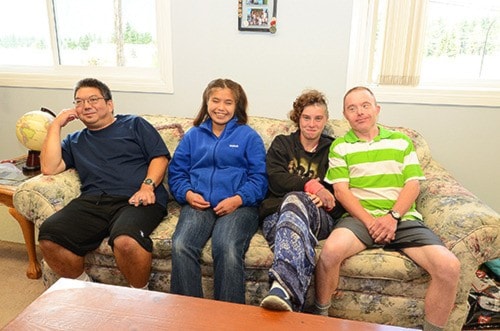Inclusive hiring can help businesses attract and retain skilled employees, and expand their range of customers and clients. To increase awareness and promote the hiring, inclusion and advancement of people with disabilities in B.C., the Province has proclaimed September 2015 as the second annual Disability Employment Month.
The Province has set a goal to have the highest labour-market participation rate for people with disabilities in B.C. of any province in Canada by 2024. This is one of the goals of Accessibility 2024, the government's 10-year action plan to make B.C. the most progressive place for people with disabilities in Canada.
“We’ve heard from businesses across B.C., there is a growing business case for hiring people with disabilities. Diverse employees bring new skills and perspective to a business - and can make it more welcoming to a broader range of customers,” said Minister of Social Devolpment and Social Innovation Michelle Stilwell. “Hiring people with disabilities is good for business.”
Throughout September, Stilwell, along with Parliamentary Secretary for Accessibility Linda Larson and partners across government, business and the non-profit sectors, will be promoting the business case for inclusive hiring.
WorkBC Employment Services Centres will be hosting open houses and job fairs to highlight the range of resources available to support disability employment, including WorkBC in Hope.
“Disability Employment Month is a chance to highlight the resources available to help people with disabilities find employment - and for employers to hire a more diverse workforce,” said Larson. “Government offers a range of supports, including assistive technology programs and training and education opportunities for post-secondary students with disabilities.”
British Columbians with disabilities are an important talent pool and potential customer base for B.C. businesses, as the province expects about one million job openings by 2020.
Currently, around 334,000 British Columbians aged 15 to 64 years identify as having a disability and according to the 2012 Canadian Survey on Disability, approximately half of Canadians with disabilities within that demographic are employed.
55 per cent of persons in the aforementioned category with disabilities, participate in the labour market, compared to 78 per cent of persons without disabilities.
The average cost of workplace accommodations for a person with disability is $500 or less. From April 1, 2015, to July 31, 2015, the Employment Program of BC provided personalized case-managed services to over 55,000 people, of which more than 21,000 had identified as having a disability.
“They are always happy to be at work — they have a great attitude, they’re on time and the customers love them,” said Ebi Fazzari from Rona, Hope B.C. “They will even show customers where stuff is, if they are asked.”
Rona currently has five employees from Tillicum Centre in Hope. Tillicum is a local facility designed to encourage the development, employment, integration and to enhance the quality of lives of its clients.
B.C. is the first province to introduce the Annual Earnings Exemption, so people receiving disability assistance can calculate their earnings up to $9,600 on an annual basis, instead of monthly. This allows workers with a disability to keep more of the money they earn. From Dec. 3, 2013, to March 11, 2014, the B.C. government held a public consultation to provide British Columbians with a disability, their families and members of the public, the opportunity to share their thoughts on what government, businesses and communities can do to reduce barriers and increase accessibility for people living with disabilities.“For many people with disabilities, employment can help them live more independent lives and become active members in their community.
“As a society, we need to continue to recognize and address the barriers - ranging from technological to attitudinal, that people with disabilities can face at work, or when looking for work.”
